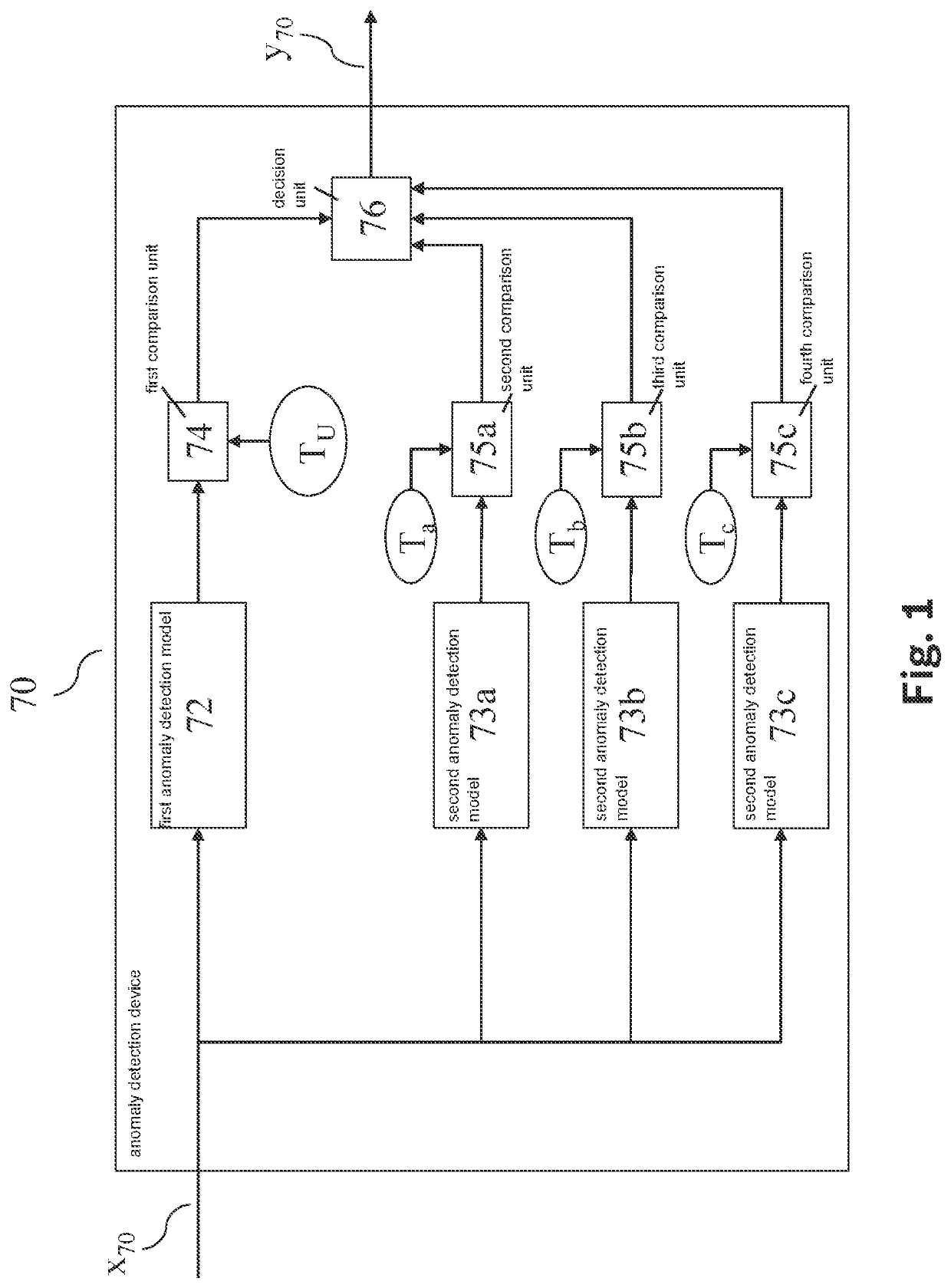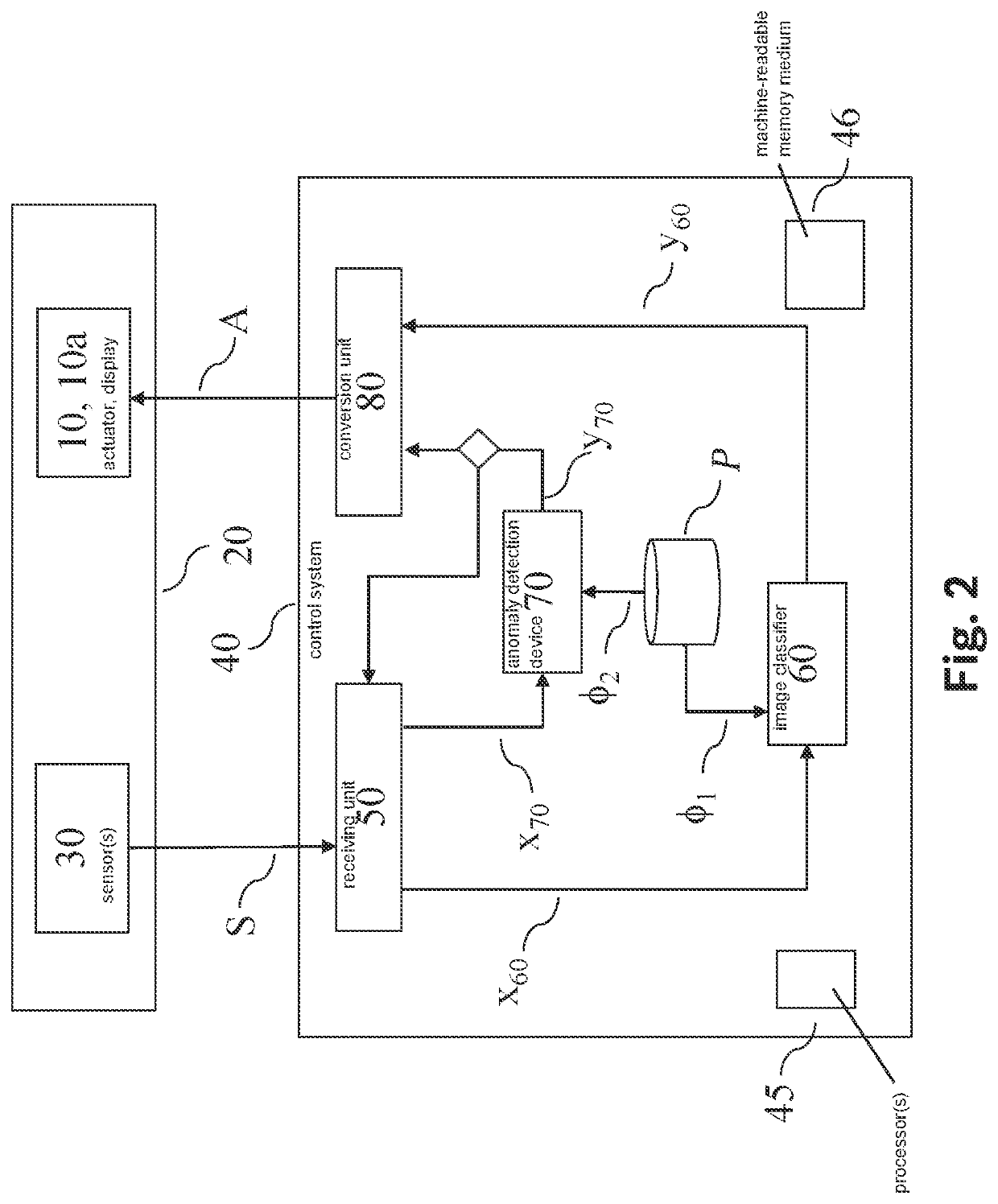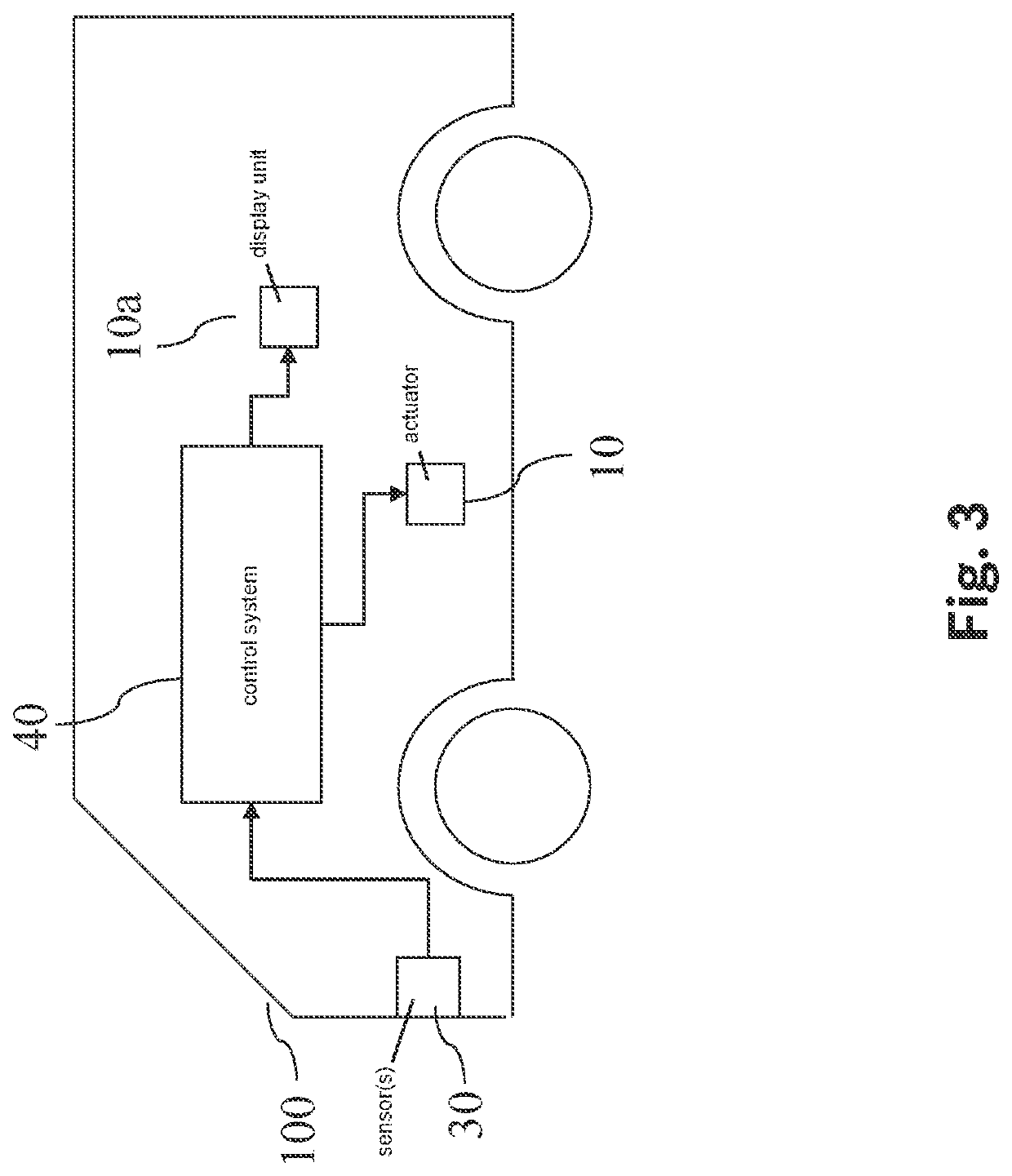Method and device for detecting anomalies in sensor recordings of a technical system
a technology of sensor recording and anomaly detection, applied in the direction of machine learning, instrumentation, structural/machine measurement, etc., can solve the problem that the sensor may transmit erroneous signals, and achieve the effect of increasing accuracy, more accurate detection of anomalies, and increasing accuracy
- Summary
- Abstract
- Description
- Claims
- Application Information
AI Technical Summary
Benefits of technology
Problems solved by technology
Method used
Image
Examples
Embodiment Construction
[0042]FIG. 1 shows an anomaly detection device 70 for detecting anomalies in one of three sensor recordings. Anomaly detection device 70 receives a first input signal x70 that encompasses the three sensor recordings. First input signal x70 is supplied to a first anomaly detection model 72, the first anomaly detection model being designed to ascertain a first probability density value that characterizes how probable the joint occurrence of the three sensor recordings is. In the exemplary embodiment, first anomaly detection model 72 is a normalizing flow.
[0043]Based on first input signal x70, the first anomaly detection model ascertains a first probability density value, which is forwarded to a first comparison unit 74. First comparison unit 74 compares the first probability density value to a first threshold value TU. For the case that the first probability density value is greater than or equal to first threshold value TU, first comparison unit 74 transmits a first decision value to...
PUM
 Login to View More
Login to View More Abstract
Description
Claims
Application Information
 Login to View More
Login to View More - R&D
- Intellectual Property
- Life Sciences
- Materials
- Tech Scout
- Unparalleled Data Quality
- Higher Quality Content
- 60% Fewer Hallucinations
Browse by: Latest US Patents, China's latest patents, Technical Efficacy Thesaurus, Application Domain, Technology Topic, Popular Technical Reports.
© 2025 PatSnap. All rights reserved.Legal|Privacy policy|Modern Slavery Act Transparency Statement|Sitemap|About US| Contact US: help@patsnap.com



